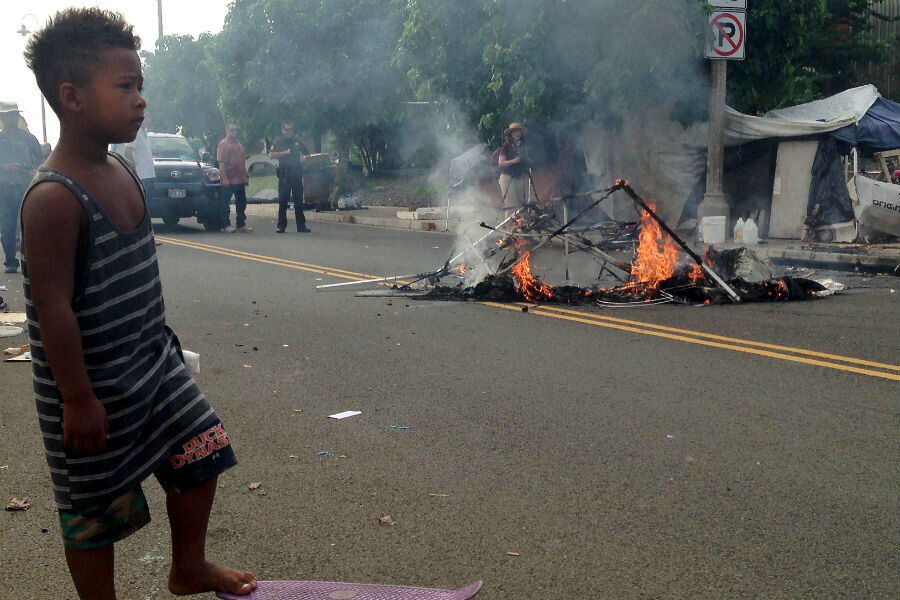Hawaii declares state of emergency for the homeless
Loading...
The governor of Hawaii declared a state of emergency on Friday to accelerate efforts to provide housing and other services to the homeless, a population that has surged in numbers especially over the past two years, according to state officials.
The proclamation speeds up the process of directing state-allocated funds of more than $1.3 million toward the building of a new shelter, as well as extending existing contracts for homeless services, according to a statement from Gov. David Ige’s office. Programs that can offer immediate housing will also receive more funding.
Since early August, officials say they’ve helped more than 150 people move into shelters in the Kakaako district of Honolulu, where officials have just finished conducting sweeps of the many homeless encampments.
Social service providers reported this year that the number of tents there had nearly doubled since last September. So bad was the situation that people couldn’t use the sidewalks to get to the nearby park, reported Hawaii News Now.
“There’s still much work to do. Hawaii has the highest rate of homelessness per capita among the 50 states, with an estimated 465 homeless individuals per 100,000,” said Scott Morishige, the governor’s administrator for homelessness issues. “The alarming increase in unsheltered individuals and families over the past two years is particularly significant on Oahu.”
Gov. Ige said on Friday, “The biggest deficit in the system is shelter space for families,” according to CNN.
The new shelter being constructed, his office emphasized, “will be temporary, and have a clear sunset date.”
Helping the homeless find homes wasn’t always the preferred call to action. But adopting such an approach, called “housing first,” homelessness rates have dramatically gone down over the past decade, The Christian Science Monitor reported. From 2005 to 2014, homelessness across the country was reduced by as much as 17 percent.
This solution has also been credited for nearly eradicating homelessness in Utah, the Monitor reported. Since 2005, the state’s chronically homeless population dropped by a staggering 91 percent, which also helped the state cut long-term costs.
“Instead of trying to fix all the problems that homeless people have while they are homeless, [housing first] gets them into housing right away, then they end up taking care of a lot of other problems from a stable home,” explained Stephen Berg, vice president of policy at the National Alliance to End Homelessness.
“It’s more humane, and it’s cheaper,” Lloyd Pendleton, the director of Utah’s Homeless Task Force, then said to NBC News. “I call them ‘homeless citizens.’ They’re part of our citizenry. They’re not them and us. It’s ‘we.’”








